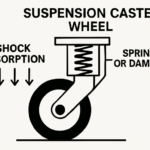Driving is an essential skill, yet it’s fraught with risks. To navigate these risks effectively, adopting a defensive driving approach is crucial.
This guide aims to introduce you to the basics of defensive driving, a technique that not only enhances your safety on the road but also instills a greater sense of confidence and calm while driving.
The Basics of Defensive Driving
Defensive driving is a skill that goes beyond simply operating a vehicle—it’s about anticipating potential hazards and mitigating risks to ensure a safe journey for everyone on the road. One crucial aspect of defensive driving is protecting against the often preventable rear-ended collision damage.
The essence of defensive driving lies in anticipation and safe driving practices, ensuring you and others on the road remain safe.
Defensive Driving Techniques
#1. Proper Use of Mirrors
Mirrors are your windows to the world behind and beside you. Adjust them correctly to minimize blind spots. Regularly check your rearview and side mirrors, especially before changing lanes, to ensure you have a comprehensive view of other vehicles’ positions relative to yours.
#2. Managing Speed and Space
Maintaining a safe speed and adequate space between your vehicle and others is vital. This space acts as a buffer, giving you time to react to sudden stops or unexpected maneuvers by other drivers. Speed control is not just about adhering to speed limits; it’s about adjusting your speed according to road conditions, traffic, and weather.
#3. Anticipating the Actions of Other Drivers
Predicting what other drivers might do is a skill that can save lives. Watch for indicators of a driver’s intentions, like turn signals or brake lights, and always be prepared for the unexpected. This vigilance helps in making informed decisions, like when to slow down or change lanes safely.
#4. Staying Calm Under Pressure
Driving can be stressful, but staying calm is key to defensive driving. Panicking can lead to rash decisions, increasing the risk of accidents. Deep breathing, listening to calm music, or taking breaks during long drives can help maintain composure.
Avoiding Rear-End Collisions
Rear-end collisions are common but largely preventable. Always maintain a safe distance from the vehicle ahead, giving yourself enough time to stop safely. Be aware of what’s happening behind you and try to gauge if the following driver is maintaining a safe distance. If someone is following too closely, safely change lanes and let them pass.
Maintaining Your Vehicle
A well-maintained vehicle is less likely to fail you when you need it most. Regular check-ups, timely oil changes, and keeping your brakes in top condition are crucial. Ensure your tires are properly inflated and have enough tread. Remember, a well-maintained car responds better in emergency situations, which can be the difference between a close call and a collision.
When to Terminate your Collision Insurance?
Deciding when to terminate your collision insurance involves a careful evaluation of your vehicle’s age, value, and your personal financial situation. Typically, as a car ages and its value depreciates, the cost-to-benefit ratio of collision insurance diminishes. But it’s crucial to remember that accidents can happen despite excellent defensive driving skills, so it’s essential to deliberate this decision thoroughly.
Conclusion
Defensive driving is not just a set of techniques; it’s a proactive approach to safety. By understanding and practicing these methods, you can significantly reduce the chances of accidents, including rear-ended collisions. Remember, the goal is not just to get to your destination but to do so safely. Embrace these practices, and you’ll contribute to making the roads safer for everyone.










